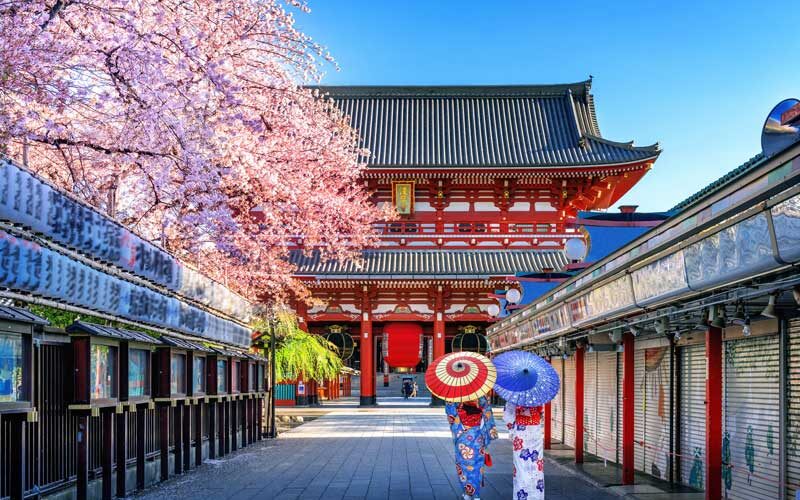Japanese art has had a profound impact on the Western art world, inspiring and influencing artists across various mediums. This article examines the dynamic relationship between Western and Japanese art, concentrating on the origins and styles of Japanese art, how Japanese art has influenced Western art, and how Western art has influenced Japanese art.
Japanese art backgrounds and their forms
– Background
Japanese art is distinguished by its extensive history, distinctive aesthetics, and wide range of forms. Western artists have been mesmerized by traditional Japanese art forms like ukiyo-e prints, sumi-e ink paintings, and calligraphy because of their simplicity, balance, and attention to detail. Western artists looking for fresh methods of expressing themselves and finding beauty have also found the wabi-sabi philosophy, which emphasizes imperfection and transience, to be appealing (Tresadern, 2017).
Some Examples of Japanese Art Forms
- Ukiyo-e (woodblock prints)
- Ukiyo-e (woodblock printing) is a classic Japanese art medium that vividly expresses Japan’s rich cultural heritage. Ukiyo-e, which means “pictures of the floating world” and dates back to the 17th century, initially portrayed the hedonistic way of life of the urban Edo era. These elaborate prints are made by carving an image onto a wooden block, dousing the block in ink, and then pressing it on paper.
- Sumi-e
- Sumi-e, a traditional and stirring style of Japanese ink painting, uses the simplicity of art to eloquently convey the spiritual and natural worlds. The only colors used in this age-old art form, which was first practiced in China and then spread to Japan, are generally black ink and various shades of gray. Sumi-e artists expertly communicate the energy and emotions of their themes, such as delicate blooms or regal creatures, with only a few skillful brushstrokes, exhibiting a strong connection to nature.
- Shodo (Calligraphy)
- The intriguing and historic art of Japanese calligraphy, Shodo, mixes the grace of the written word with the flow of the brushstrokes. Shodo is a distinctively Japanese kind of calligraphy with roots in Chinese calligraphy that has developed through the years. Artists construct graceful characters on delicate rice paper by dipping brushes made of bamboo and animal hair in deep black ink. Shodo, however, is a style of meditation and self-discipline that cultivates the mind and soul, not merely beautiful calligraphy.
- Manga
- An essential component of Japanese culture, manga has won the hearts of millions of people all over the world with its vast variety of subjects and engaging narrative. There is a manga for every taste and age group, from sweet slice-of-life stories to action-packed adventures. This multifaceted art style, which has its roots in Japan, mixes innovative images with compelling stories to provide readers with an unparalleled level of immersion (David, 2023).
Japanese influence on Western art
When Japan began to engage in commerce with the West in the middle of the 19th century, Japanese art began to have an impact on Western art. During this time, known as Japonism, Western painters, notably those in Europe, developed a greater interest in and admiration for Japanese art. Artists like Vincent van Gogh and Claude Monet were influenced by the strong colors and flatness of ukiyo-e prints, which gave rise to the Impressionist and Post-Impressionist styles. The compositional strategies and colorful patterns of Japanese woodblock prints have had an impact on the graphic arts, influencing the development of Art Nouveau and graphic design in the West (Cramer and Grant, 2021).
Western influence on Japanese art
Japanese creative traditions were influenced by Western art as well as Japanese art, which had an impact on both. During the Meiji Restoration in the late 19th century, Japan rapidly modernized and Westernized. Yoga, a fusion of Japanese and Western creative forms, emerged during this period as Japanese artists started mixing Western techniques, perspectives, and subject matter into their paintings. The popularity of Western academic painting and Western-style oil paintings led to the emergence of artists like Kuroda Seiki and his Western-influenced landscape paintings. Through continued intercultural engagement during the 20th century, Japanese artists were able to experiment with new ways of expressing themselves through Western art movements, including Cubism and Abstract Expressionism (Edubirdie, 2022).
Conclusion
Japanese art has significantly influenced Western culture, changing creative processes and inspiring countless artists. Japanese art emphasized simplicity, nature, and introspection, which challenged Western concepts of representation and beauty. As a result of the exchange of concepts and creative techniques over time, both Western and Japanese art have evolved and become increasingly complicated. This intercultural interaction reaffirms the profound impact of Japanese art on Western society.
References
Cramer, C. and Grant, K. (2021). Japonisme (article) | Impressionism. [online] Khan Academy. Available at: https://www.khanacademy.org/humanities/becoming-modern/avant-garde-france/impressionism/a/japonisme [Accessed 14 July 2023].
David (2023). 12 Japanese Art Forms: Everything You Need to Know. [online] Japan Wonder Travel Blog. Available at: https://blog.japanwondertravel.com/japanese-art-forms-49922#toc11 [Accessed 14 July 2023].
Edubirdie (2022). Western Influence in Japanese Art – Free Essay Example. [online] Edubirdie. Available at: https://edubirdie.com/examples/western-influence-in-japanese-art/#citation-block [Accessed 15 July 2023].
Tresadern, M. (2017). When east inspired west: the extraordinary influence of Japanese art | Art UK. [online] artuk.org. Available at: https://artuk.org/discover/stories/when-east-inspired-west-the-extraordinary-influence-of-japanese-art [Accessed 12 July 2023].
